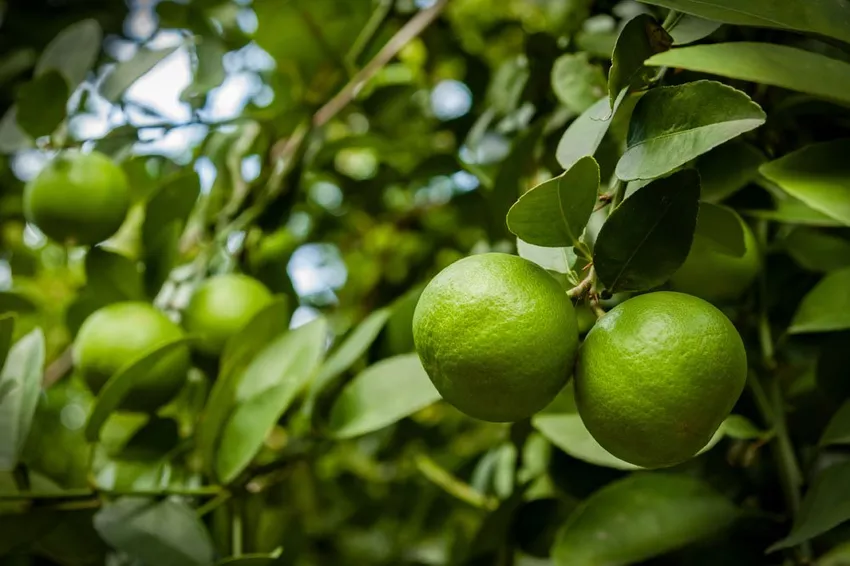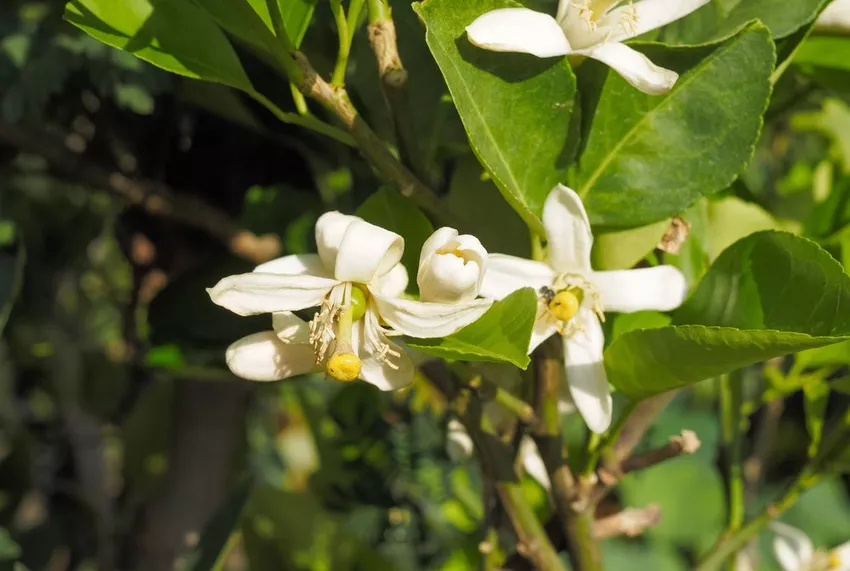Anyone who gets a lime tree in the garden or on the terrace should know how to care for it and heed tips for overwintering.
 In our latitudes, the evergreen lime trees are usually only kept as container plants, similar to other citrus plants. The lime tree (Citrus aurantifolia) or real lime prefers a sunny to moderately semi-shady location outdoors that is as sheltered as possible (or as a houseplant). In addition, the lime tree loves the subtropical climate.
In our latitudes, the evergreen lime trees are usually only kept as container plants, similar to other citrus plants. The lime tree (Citrus aurantifolia) or real lime prefers a sunny to moderately semi-shady location outdoors that is as sheltered as possible (or as a houseplant). In addition, the lime tree loves the subtropical climate.
So that your lime tree grows and thrives magnificently, here are a few tips on how best to care for it.
Lime Tree Care
| Lime tree or real lime (Citrus aurantifolia) | |
|---|---|
| Growth form: | upright, bushy |
| Growth: | 70 - 90 cm |
| Flowering: | May to June |
| Location: | Sun to partial shade |
| Floor: | rich in humus, fresh to moist |
Repot regularly
You must repot the lime tree or lime bush into larger tubs according to their growth.
» Tip:
For large plants, you should use pots with casters, as they make it easier to move them around, e.g. if you bring the potted plant indoors for the winter want.
Repotting should be done regularly in the first few years, usually once a year. Always use special citrus soil or a plant substrate that is as permeable as possible (e.g. a sand mixture).
» Tip
If the lime tree sheds its leaves, this is due to a stressful situation, e.g. because it has been moved and/or repotted. After a few weeks, however, new leaves usually form again on the densely branched branches.
Lime tree - flowering and fertilizing
In the period from May to June, the lime tree will delight you with a splendor of white flowers. Only then do the green citrus fruits, which are elementary for a Caipirinha cocktail, form.

» Tip
During this time - from spring to summer - you should fertilize the citrus plant andThis is best done once a week with an iron-rich citrus fertilizer to prevent an iron deficiency (recognizable by the yellowing of the leaves).
Pruning Lime Tree
But be careful
Limes should only be cut back during their overwintering phase.
Once lime trees get out of shape, you can prune them like other fruit trees.
Citrus aurantifolia is cut above a leaf base or a bud.
Winter Lime Tree
 Lime trees should always overwinter in rooms that are as bright as possible. This can happen in a living room or a conservatory - but then at temperatures of around 20 degrees and the highest possible humidity. It is best to spray the plant regularly with water to prevent spider mites.
Lime trees should always overwinter in rooms that are as bright as possible. This can happen in a living room or a conservatory - but then at temperatures of around 20 degrees and the highest possible humidity. It is best to spray the plant regularly with water to prevent spider mites.
Important: Lime trees do not tolerate direct contact with underfloor heating, which radiates too much heat.
Some lime varieties also tolerate overwintering in frost-free rooms without heating. However, you should also give the plants a little fertilizer every month.
Important: With both overwintering methods, you must always ensure that the plants do not dry out - so always water all citrus plants regularly.
In the meantime, plant hybrids such as lime-grapefruit are also offered in specialist shops. These usually quite robust plants are to be treated in a similar way (follow the grower's plant instructions).